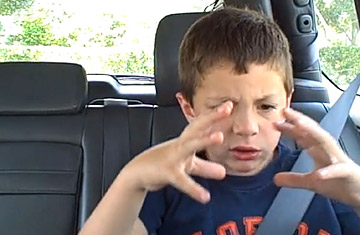
David After Dentist
(6 of 8)
With that in mind, YouTube has started getting into the business of producing its own content, just like a TV network. To do that, it poached a man named Robert Kyncl from Netflix and made him its global head of content. Kyncl--whose thick accent (he's Czech), large teeth and furious energy inevitably remind one of Arnold Schwarzenegger--has been forging partnerships with established old-media creators all over Hollywood, offering them cash, low production costs and no hassles. "All content creators, especially the more successful they become in television, the less happy they are with the way their art is treated," Kyncl says. "They're getting notes and creative direction from those who find the audience for them, which is the TV networks. They view YouTube as a place where they can find creative freedom." So far Kyncl has signed deals with Jay-Z, Madonna, Disney, the Onion, Amy Poehler, Tony Hawk and Anthony Zuiker (he created CSI), among others, to build channels on YouTube, some of which have already launched. If it all sounds a bit quixotic--a website for novelty videos, owned by a company without a single content-related base pair anywhere in its corporate DNA, trying to take on all of TV--consider this: right now, the most popular channel on YouTube has 5.3 million subscribers. That's impressive in itself, but even more so when you consider that cable TV's top network, USA, averages only 1.3 million viewers over the course of each day. Granted, USA's viewers spend a lot more time watching USA than YouTubers do on YouTube, but still. The scale is still there.
Though just because YouTube has channels now doesn't mean that its rules have fundamentally changed. The nature of the beast is still the same, and one wonders if the likes of Madonna and Jay-Z fully understand that. For instance: that YouTube channel, the one with the 5.3 million subscribers, doesn't belong to a celebrity or a major broadcast network. It's called RayWilliamJohnson, and it belongs, not surprisingly, to one Ray William Johnson, a law student turned video blogger who does rapid-fire commentary on other people's viral videos.
That's one of the funny wrinkles in YouTube's channel strategy: anybody can run one easily and for free. That puts individual YouTube users on the same footing with celebrities and major networks. They don't even have to produce their own content. Cable TV is very much about buying and/or creating expensive and/or original programming, but more content is the last thing YouTube needs. It's drowning in content, at 60 hours a minute! So a channel owner can create value simply by curating and organizing content, which is something that an individual or a small group can do as well as a network, and sometimes better. Johnson is a good example. Another is the Young Turks, a news channel that reposts and comments on other people's footage and interviews. CNN's YouTube channel has 50,000 subscribers, but the Young Turks, with a fraction of CNN's resources, has 315,000. In the land of abundance, it's the curator, not the creator, who is king, and authenticity and relatability are worth as much as or more than slick production values.
